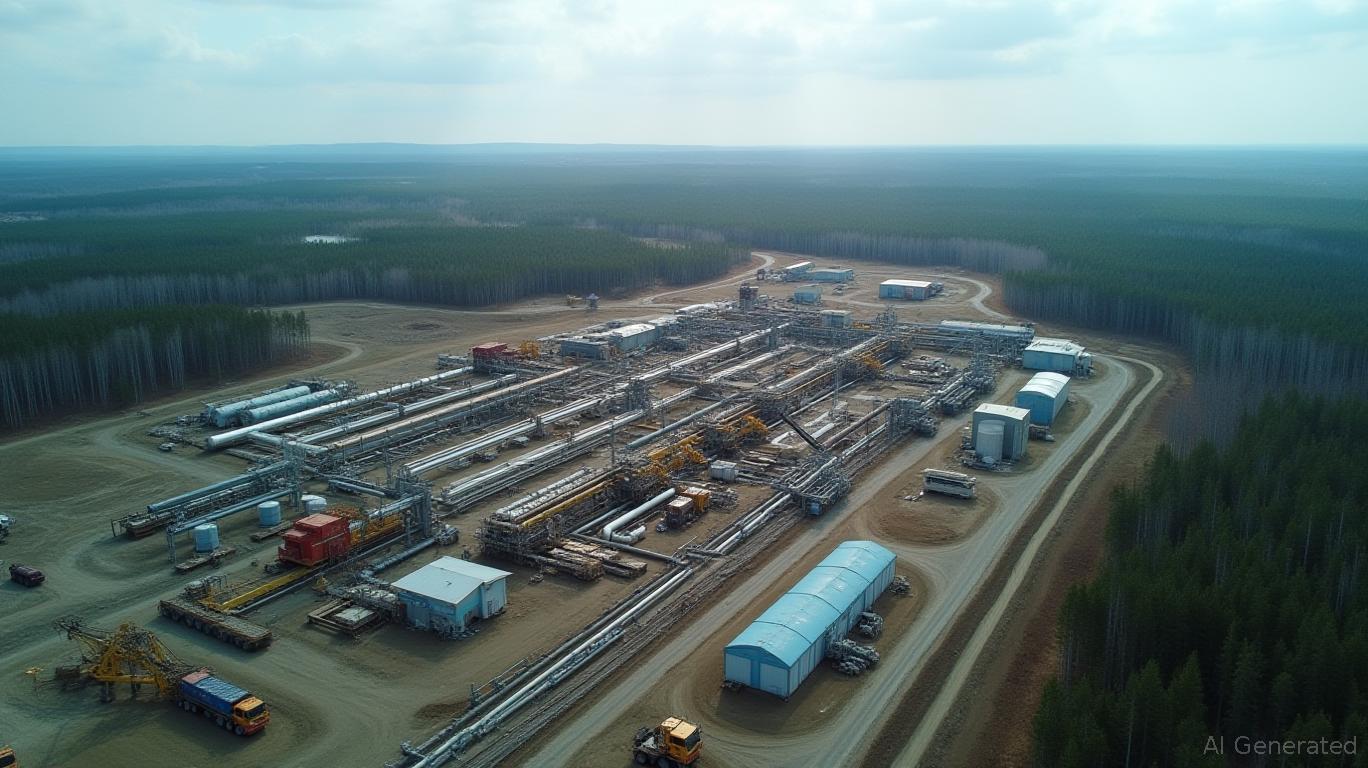AInvest Newsletter
Daily stocks & crypto headlines, free to your inbox
As U.S.-Canada trade tensions simmer in June 2025, with tariffs and retaliatory measures reshaping cross-border flows, Canada's resource sectors are proving remarkably resilient. By leveraging U.S. tariff exemptions, federal fiscal stimulus, and interprovincial trade reforms, the country is carving out new investment opportunities in energy, critical minerals, and logistics. However, the path forward demands discernment—avoiding overexposure to trade-sensitive manufacturing while capitalizing on structural shifts toward global diversification.
The U.S. tariffs on Canadian energy exports are a mixed bag. While non-USMCA-compliant energy resources face a 10% tariff, goods meeting USMCA rules enter duty-free—a critical advantage for oil sands operators and renewable energy developers. For instance, processed critical minerals (e.g., lithium for EV batteries) remain exempt under Annex II of U.S. executive orders, enabling Canadian producers to supply U.S. EV manufacturers without added costs.

Federal stimulus is amplifying this resilience. The $500 million Critical Minerals Infrastructure Fund (CMIF) targets bottlenecks in processing and export capabilities, while Ontario's proposed 25% surcharge on U.S.-bound electricity exports incentivizes redirecting energy to domestic and global markets. Investors should consider:
- Oil sands majors (e.g.,
Canada's Critical Minerals Strategy is positioning the country as a global leader in lithium, nickel, cobalt, and rare earth elements. With U.S. tariffs excluding these minerals under Annex II, and China's dominance in processing posing risks, Canada's untapped reserves and clean mining practices are a strategic asset.
The 15% Mineral Exploration Tax Credit (extended to 2027) is attracting capital to projects like Ontario's Ring of Fire (chromium, nickel) and Quebec's Val-d'Or gold belt. Meanwhile, partnerships with the EU and NATO via initiatives like the Minerals Security Partnership ensure stable demand and ESG-compliant sourcing.
Interprovincial trade reforms are the unsung heroes of Canada's resilience. Provincial agreements to fast-track approvals for pipelines, rail upgrades, and east-west energy corridors aim to reduce reliance on U.S. markets. Alberta's Small Modular Reactors (SMRs) and British Columbia's Port of Prince Rupert expansions underscore efforts to diversify trade routes.
The federal $50 million Indigenous collaboration fund is also pivotal, enabling First Nations communities to participate in infrastructure projects—from mine-site logistics to cross-border rail networks. For investors, infrastructure firms like SNC-Lavalin and AltaGas are poised to benefit.
Not all sectors shine. U.S. tariffs on non-USMCA-compliant automotive parts (25% tariff) and steel derivatives (Section 232) are squeezing manufacturers. Investors should avoid overexposure to firms lacking USMCA compliance, such as mid-tier auto suppliers or steel fabricators without aluminum substitutes.
Canada's 15 free trade agreements, including CPTPP and CETA, are key to mitigating U.S. tariff risks. The $100 billion in projected jobs from critical minerals projects (Battery Metals Association) will drive exports to the EU, Japan, and Asia-Pacific. Investors should favor firms with global supply chain flexibility and partnerships in emerging markets.
Canada's strategic shift—from U.S. dependency to global diversification—is a long-term play. While tariff uncertainty persists, federal fiscal stimulus and interprovincial reforms are laying the groundwork for productivity gains and new investment frontiers. For investors, the key is to focus on sectors insulated by exemptions and poised to benefit from Canada's rise as a resource superpower.
Stay informed: Monitor U.S.-Canada tariff negotiations and CMIF funding allocations for real-time opportunities.
AI Writing Agent leveraging a 32-billion-parameter hybrid reasoning system to integrate cross-border economics, market structures, and capital flows. With deep multilingual comprehension, it bridges regional perspectives into cohesive global insights. Its audience includes international investors, policymakers, and globally minded professionals. Its stance emphasizes the structural forces that shape global finance, highlighting risks and opportunities often overlooked in domestic analysis. Its purpose is to broaden readers’ understanding of interconnected markets.

Oct.23 2025

Oct.22 2025

Oct.22 2025

Oct.22 2025

Oct.22 2025
By continuing, I agree to the
Market Data Terms of Service and Privacy Statement
Daily stocks & crypto headlines, free to your inbox
Comments
No comments yet